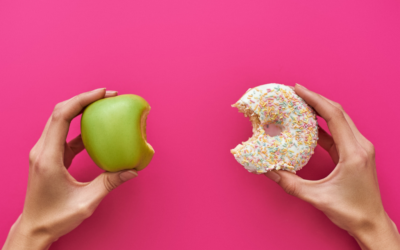Low GI diet more important than cutting sugar to reduce diabetes risk
There’s a common misconception, even among health professionals, that eating too much sugar can increase the risks of developing type 2 diabetes.
A new gold-standard global study has busted this myth.
The secondary analysis of PREVIEW found that eating a low GI diet could be more important than cutting back on sugar, when it comes to reducing your risk of developing type 2 diabetes.
The research – which included Sydney participants and researchers from the University of Sydney’s Charles Perkins Centre – showed diets with a higher GI were associated with a significantly greater risk of developing type 2 diabetes, while there were no links with diets that were higher in sugar.
Researchers also identified an association between higher GI diets and weight regain after weight loss, specifically an increased waist circumference.
So, why is this study so important?
The study is among the first to show dietary GI was more important than added sugars intake for both body fatness and diabetes risk factors over the longer-term.
“This is a unique study and one of the very few on long-term weight loss. The participants are health-conscious people trying to maintain weight loss for three years, with close follow-up by researchers, so we have a very good handle on how their bodies are changing,” said world-renowned GI expert and co-author, Professor Jennie Brand-Miller.
“We’ve found the number one dietary factor for increasing type 2 diabetes risk and regaining the body fat is GI.”
Should we still focus on cutting out sugar?
The results of this study have promoted researchers to warn of the dangers of fixating on cutting sugar.
Lead author Dr Karen Della Corte said becoming overly focused on restricting sugar intake risked overlooking other proven dietary strategies for T2D prevention, such as lowering the GI of the diet.
“There is a widespread misunderstanding that sugars are particularly potent at elevating blood glucose. In reality, starchy foods have a greater impact on blood glucose levels. Replacing sugars with refined starch is not helpful,” said Dr Della Corte, Assistant Professor, Brigham Young University, USA.
“Sugar consumed in moderate amounts (under 10% of total energy) appears to be neutral and can even improve glucose metabolism when it promotes the consumption of other healthful foods. Many foods that are sweetened with added sugar, such as wholegrain cereals, fruit, and yogurt, have shown a protective association with T2D.”
What can we take away?
According to Professor Brand-Miller the key learning is choosing good carbs.
“Weight regain after weight loss and type 2 diabetes are impacted by the intake of foods with a high GI, people need to be aware of the GI of the carbohydrates in their diet, not avoid them altogether,” said Prof. Brand-Miller.
“Carbohydrates are good for you, they taste good, and people love them, but people need more information to help them make healthier low GI choices.”
How do you start a low GI diet?
The Glycemic Index Foundation has a wealth of information to help make switching to a low GI diet simple, including:
- A low GI starter kit
- Low GI meal plans and recipe collections
- A swap it tool that works our low GI options for you
And when you are at the supermarkets, look out for products with the Glycemic Index Foundation’s GI Symbol. The GI symbol is a simple shortcut to finding and choosing healthier, certified low GI products. You can find a list here.
If you enjoyed this article read more about the science behind a low GI lifestyle and how it can improve liver fat in just 2 weeks.
Report: This secondary analysis of the diabetes prevention study PREVIEW



